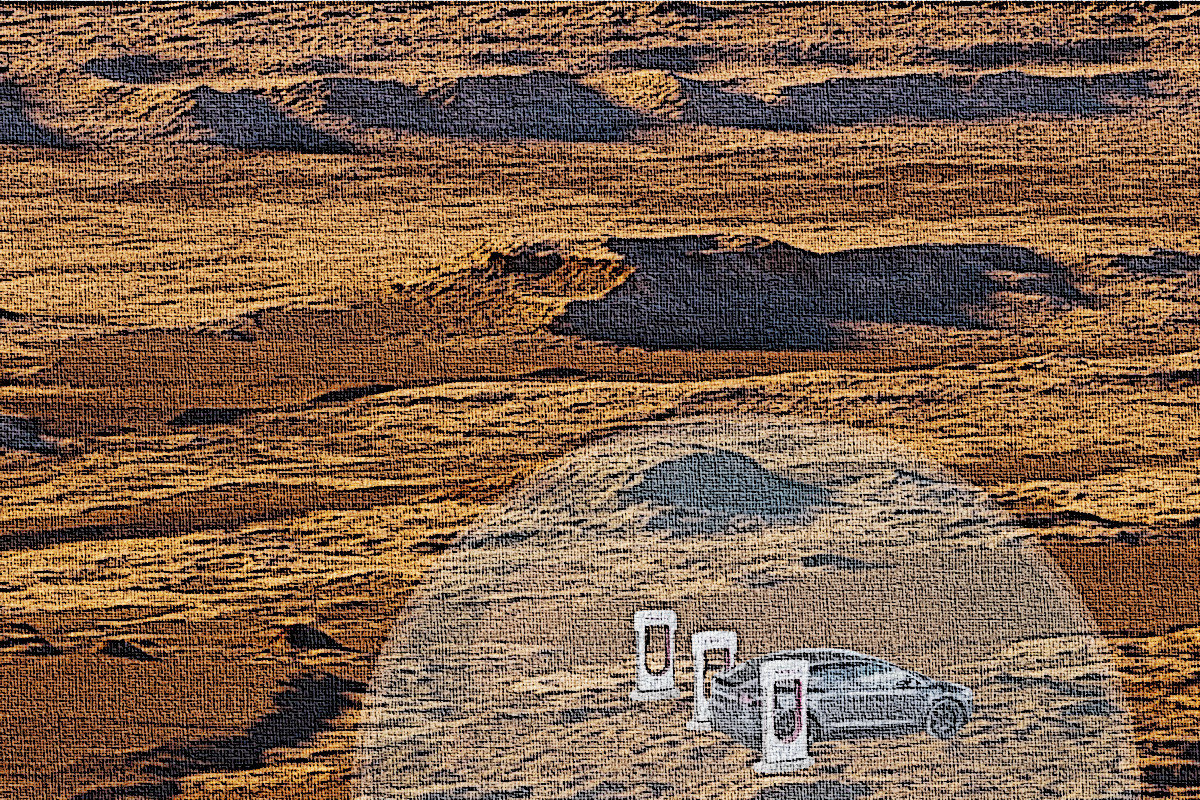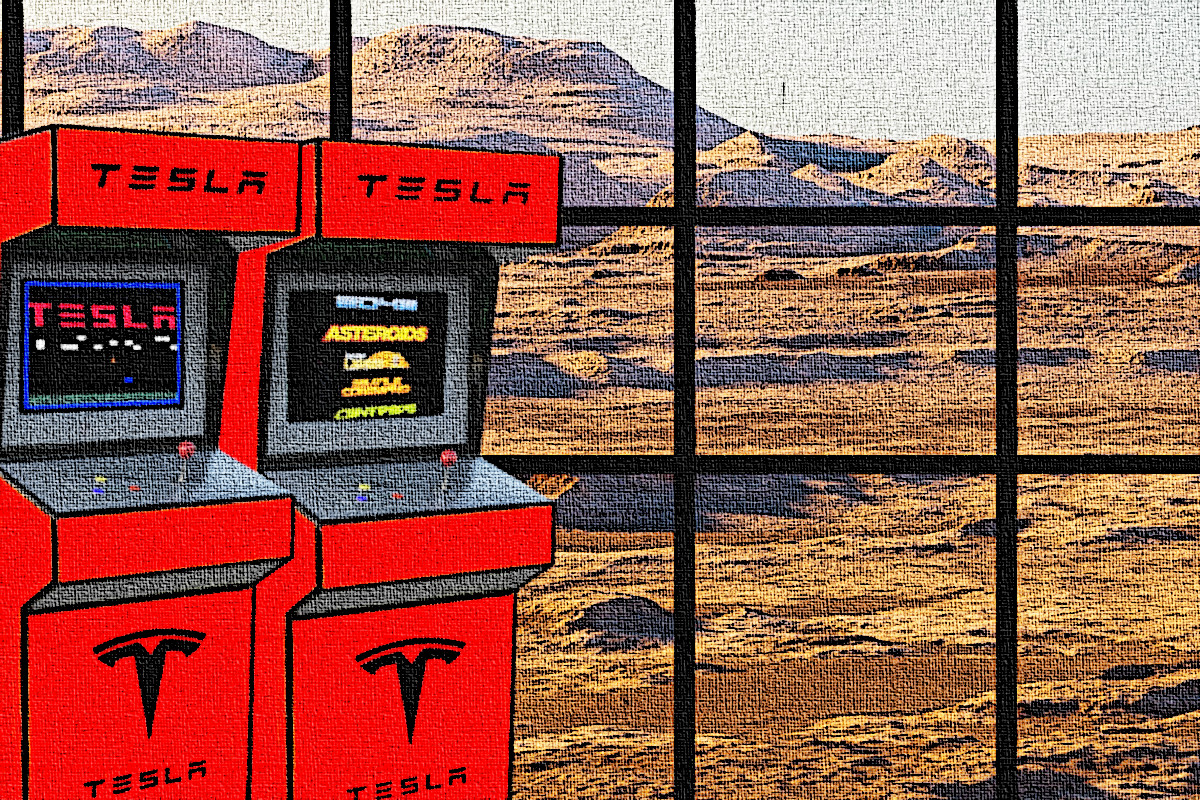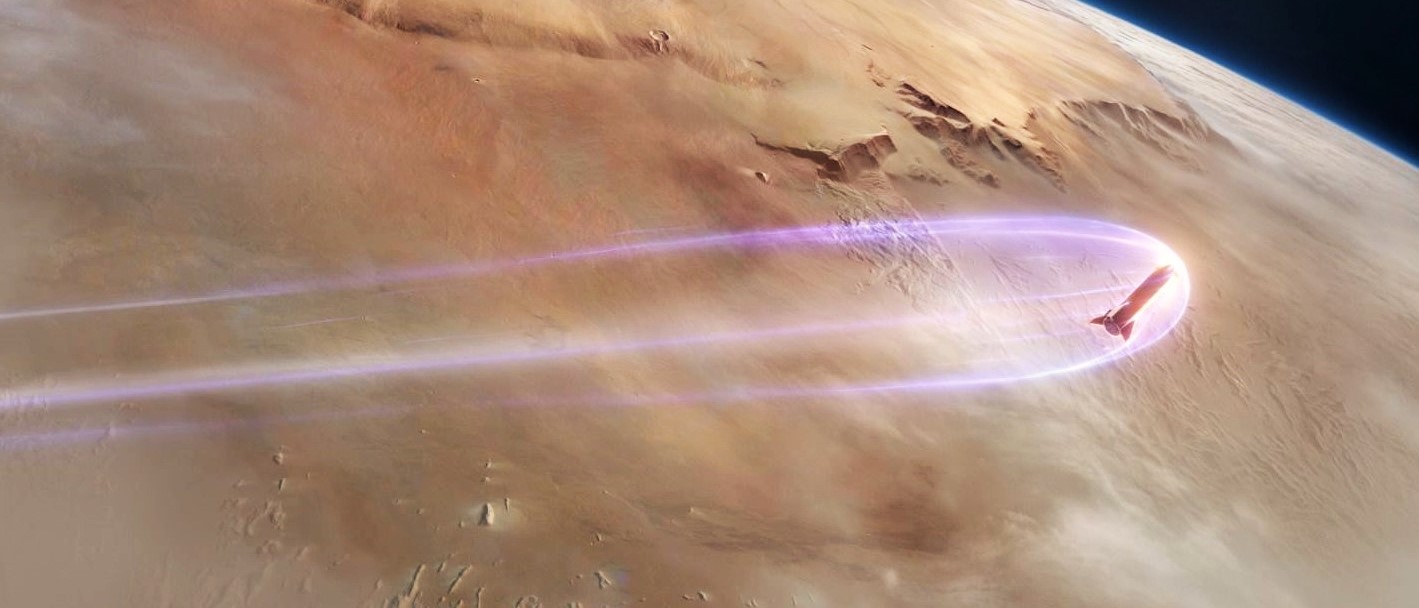The words Elon Musk and Mars find themselves in the same sentence frequently, and for good reason. After all, why would Musk just be content merely working on the problems of Earth knowing full well that it would only take one extinction-level event to wipe it all out? If we manage to avoid all major asteroids, the Sun is still going to expand and burn us up in about 5 billion years, so we should probably practice living somewhere else in the meantime. Or so goes the argument. [For what it’s worth, I don’t need the existential argument to want to colonize other planets.]
SpaceX and Musk have big plans to shuttle the first long-term residents of Mars to their new regolith-covered home. But in the meantime, Musk is also running an all-electric car company that’s expanding by the minute and keeps selling more and more cars. Tesla and SpaceX have already seen some relationship crossover, and two places particularly stand out: Musk’s cherry red Roadster sent into space by the maiden launch of Falcon Heavy, complete with Starman as its passenger; and the upcoming SpaceX thruster package that will be an option on the next generation Roadster.
Now, imagine if that relationship were expanded to a colony-level scale on Mars…
[[[[[ Camera fades to black then fades back in. ]]]]]
The year is 2050, and you’ve caught a seat on the last cargo ship bound for Mars full of red planet editions (rpe) of Models S, 3, X, and Y on their way for delivery to Colony Bravo. This is one of the last shipments to come from Earth before the Terafactory finishes construction and begins manufacturing on site. The company’s production lines were retooled to build the vehicles to work without air or air pressure and under extreme temperatures and high levels of UV radiation, along with a few other things to help traverse the planet’s surface better. However, skipping the satellite clean room procedures will be a welcome change for Tesla as it’s just one less thing their factory has to comply with to meet planetary protection regulations.
You’re on your way to visit your niece and nephew who were among the first humans to be born on Mars. Since the journey and stay on the planet will be long, you’ve taken up a contract job repairing Tesla tiles on habitation modules. That’s how you scored this economy class flight and can finally afford to see your brother for the first time since he and his wife left Earth for an Autopilot programming job at Tesla’s Gale Crater headquarters a few years ago.
Your brother picks you up in his Roadster (rpe). He tells you a bit about the work he’s doing training Tesla’s neural net to map out the red planet as you drive along and take in the sights. The mapping has been very useful to the researchers on Mars for route and site planning. Licensing deals are now in the works with relocation companies to help the next wave of colonists pick out prime real estate. One of the groups is going to set up the first terraforming projects using some type of silicon aerogel.

After arriving at your brother’s house, you finally meet your niece and nephew and the team of doctors monitoring their development. It seems a little invasive to have medical people in and out of their personal space so frequently, but your brother’s wife swears it’s become normal for them. You take note that the family’s habitat has both a top dome with Tesla tiles for electricity and an underground residence that’s connected to the larger city infrastructure via tunneled highways. A couple of them run on Hyper-T technology, Tesla’s Martian-modified version of the Earth-based Hyperloop, and the oldest tunnels were put in place by The Boring Company; however, several other digging and construction companies have since moved in, and Boring decided to just license its tech on Mars so it could focus on all the Earth projects it was busy with.
You get a quick tour of your brother’s local community and see that large facilities and shopping centers are also underground, but most garden pods are open to the surface with similar top domes to what your brother has, albeit much taller. You pass a battery storage center full of Tesla Megapacks (rpe) that are connected to solar panels at the surface.
Your brother next takes you to the lodging facility that Tesla contracted for you. According to the area’s website, you’re staying in a modified Tesla Semi (rpe) that’s been converted into a type of RV. Since the big rigs were already climate controlled and pressurized for construction work throughout the planet, the retro fits were pretty cheap and give newcomers affordable housing while they settle into their new lives and contract one of the digging companies to bore out a residence.
On the way to your lodging, your brother sees a geologically interesting patch of regolith and wants to grab a few bits for his rock collection. Using the Roadster’s split-chamber function, an airlock is formed around the driver’s seat after a clear divider goes up between the two of you and seals into place. He zips his walkaround suit up to the atmospheric helmet stored under his seat and goes outside for a bit.

After he comes back inside, he remembers that he didn’t offer to feed you lunch at his house and asks if you want to check out one of the local Supercharger stations where there’s a nice retro-themed restaurant. You don’t have to report to Tesla until tomorrow, so you’re up for it. Once there, you enter a car-sized airlock before moving into the charging area. Your brother mentions some things about how the Superchargers work there and how they need a pressurized environment like this one, prompting you to look upward. Somehow you missed the giant bubble encompassing the whole facility.
You both exit the Roadster and start heading towards Maye’s Diner a few hundred feet away. There’s an arcade in a building next door and before you ask about it, your brother tells you it was his favorite place to go when he first moved to Mars. It has all the old Teslatari classics, but the real draw is the virtual reality (VR) games from Tesla’s Full-Self Driving (FSD) launch.
You remember the cool looking sunglasses that were sent to customers who’d purchased FSD that turned out to be VR headsets with games and experiences integrated with the Autopilot. Game obstacles were mapped from the actual roads as the cars were driving. Your brother reminds you that’s what inspired him to move to the red planet – the Total Recall VR experience that came pre-loaded in his Model S. The two of you then grab a bite to eat at Maye’s and head out.
Once at your RV habitat, you watch the local news streamed from your included Starlink-M Internet plan, and then notice you have mail already. It’s just marketing, but you read it anyway, kind of like you would read flyers for tourist attractions on vacation. The ad says Amazon Red has a new members deal for Earth classic deliveries. “A taste of home!” it says, along with explaining how the company makes deliveries to Mars every two weeks, regardless of orbital synchronization, and that all products are certified sterile by the Planetary Protection Food & Drug Agency. You wonder if the food items need to be reconstituted but then decide you’ve had enough information for one day and head to bed.
[[[[[ Camera fades in and out again. ]]]]]
So, do you think Tesla will have a big presence on Mars once Musk et al. get there??











